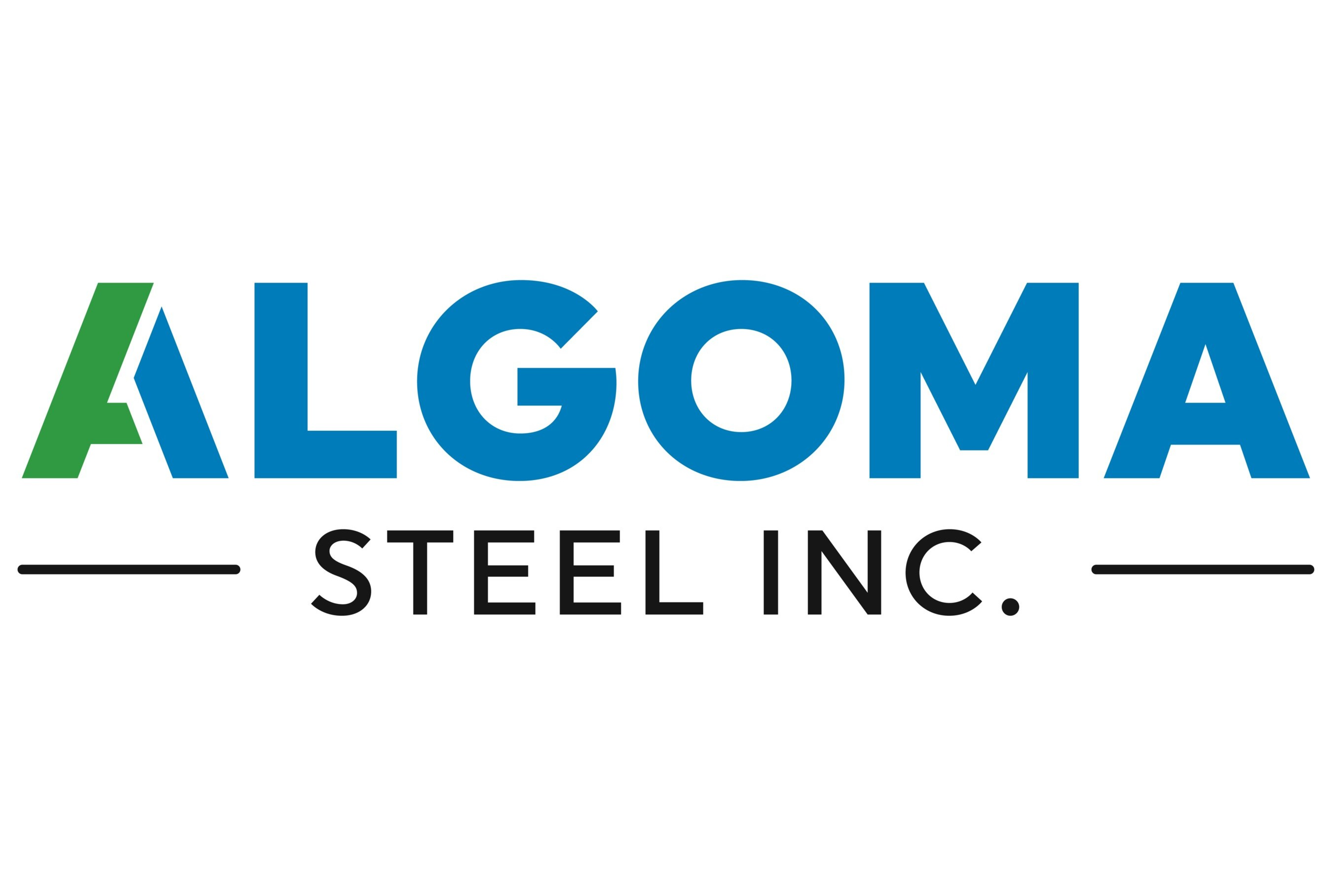Market Segment

April 18, 2016
Service Center Analysis for March 2016
Written by John Packard
There is still no light at the end of this tunnel except for coated products which have had three months of shipment growth on a tons / day, (t / d) basis.
Total service center carbon steel shipments increased by 142,100 tons in March to 3.176 million tons. This increase was driven by the number of shipping days, up by 2 to 23. On a tons per day basis shipments decreased from 145,500 tons in February to 138,100 tons in March.
In the eight years since and including 2009, March shipments on average on a t/d basis have been up by 0.9% from February. This year shipments were down by 4.4%. Therefore on a long term basis (8 years), the March performance compared to February was disappointing. This observation is only intended to give a long term perspective because MSCI data is extremely seasonal and we need to get past that before commenting in detail on current results. Figure 1 demonstrates this seasonality and why comparing a month’s performance with the previous month is usually misleading. We can expect a surge in t/d shipments in April. In the SMU analysis we always consider year over year changes to eliminate this seasonality.
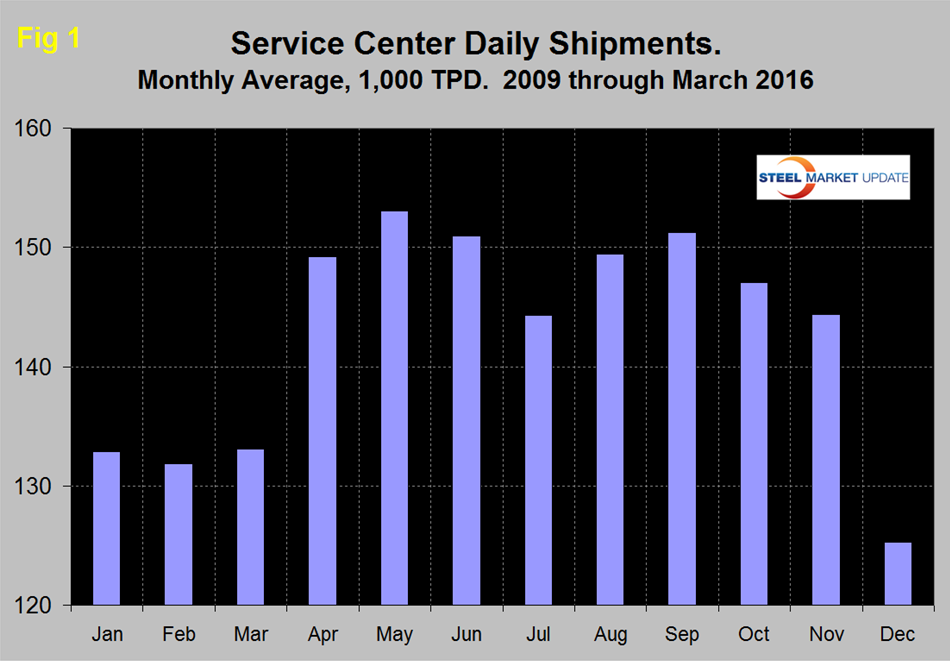
Table 1 shows the performance by product in March compared to the same month last year and also with the average t/d shipments for March during the last three years. We then calculate the percentage change between March 2016 and March 2015 and with the 3 year March average. Our intention is to provide an undistorted view of market direction. In March, intake at 131,200 t/d was 6,900 tons less than shipments. This was the sixth month of deficit after three months of surplus. The intake deficit was evident for all sheet products except coated. Plate and bar sized shapes had a small surplus of intake / shipments. Compared to March 2015, intake was down by 9.4% overall and the intake of all products except coated sheet was down y/y.
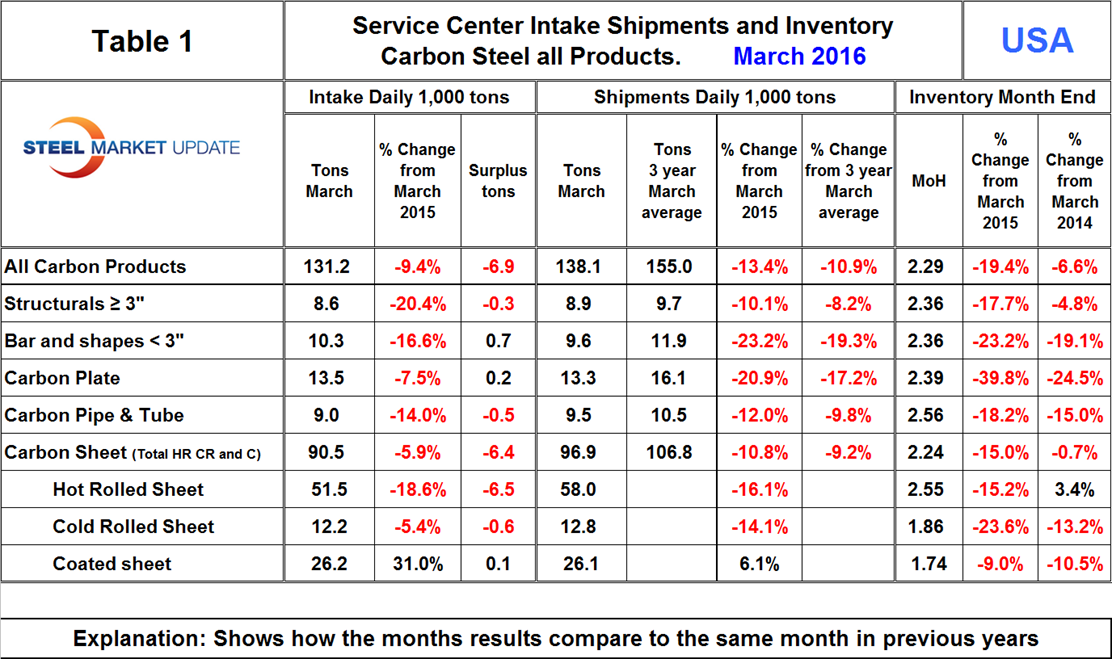
In December 2015 the MSCI expanded their data to include sub sets of the major product groups and provided two years of data covering all of 2014 and 2015. Table 1 shows the breakdown of sheet products into hot rolled, cold rolled and coated products. From an intake point of view, hot rolled was down by 18.6% y/y, cold rolled was down by 5.4% but coated products continued to have a huge, (31.0%) y/y increase.
Shipments of all products in March on a t/d basis were down by 13.4% y/y and were 10.9% less than the average March shipments for 2016, 2015 and 2014. The fact that the single month y/y growth comparison is worse than the three year comparison is an indication that momentum is negative and the contraction is accelerating.
Figure 2 shows the long term trends of daily carbon steel shipments since 2000 as three month moving averages (In our opinion the quickest way to size up the market is the brown bars in Figures 2, 5, 6 and 8 which show the y/y change in shipments. All four of these graphs show a solid contraction.)
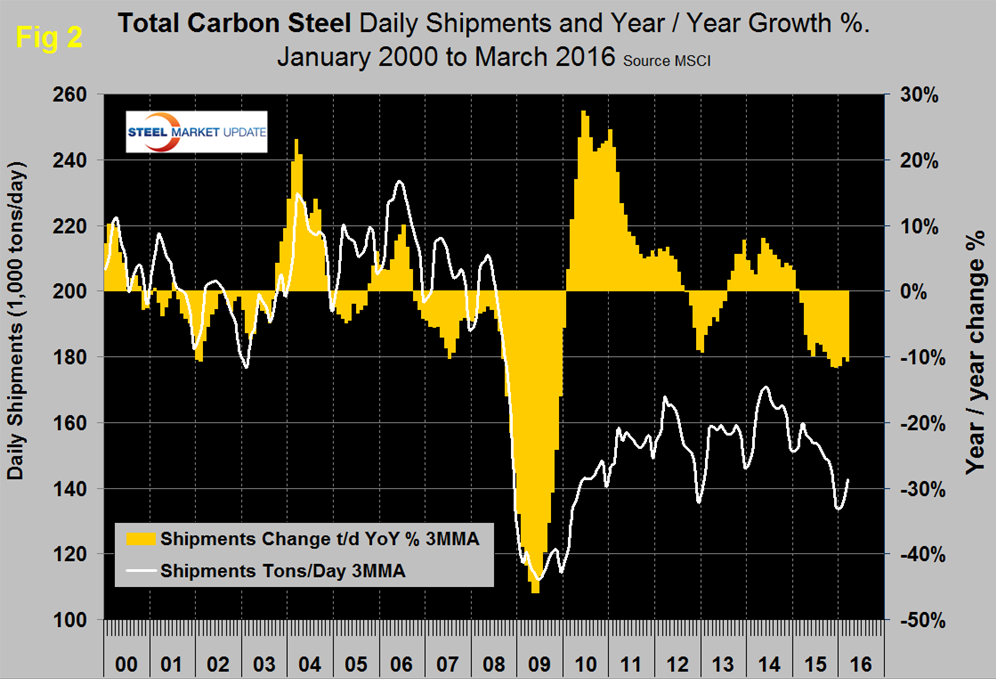
Total daily shipments had a post recessionary high of 173,300 in April 2014 and as shown by the brown bars in Figure 2 have had 13 consecutive months of negative growth. In March shipments of all major product groups were down by double digits year over year. Within the sheet group, coated products had positive growth, the only bright spot in this whole report. Figure 3 shows the historical shipping rate of three sheet products since January 2014.
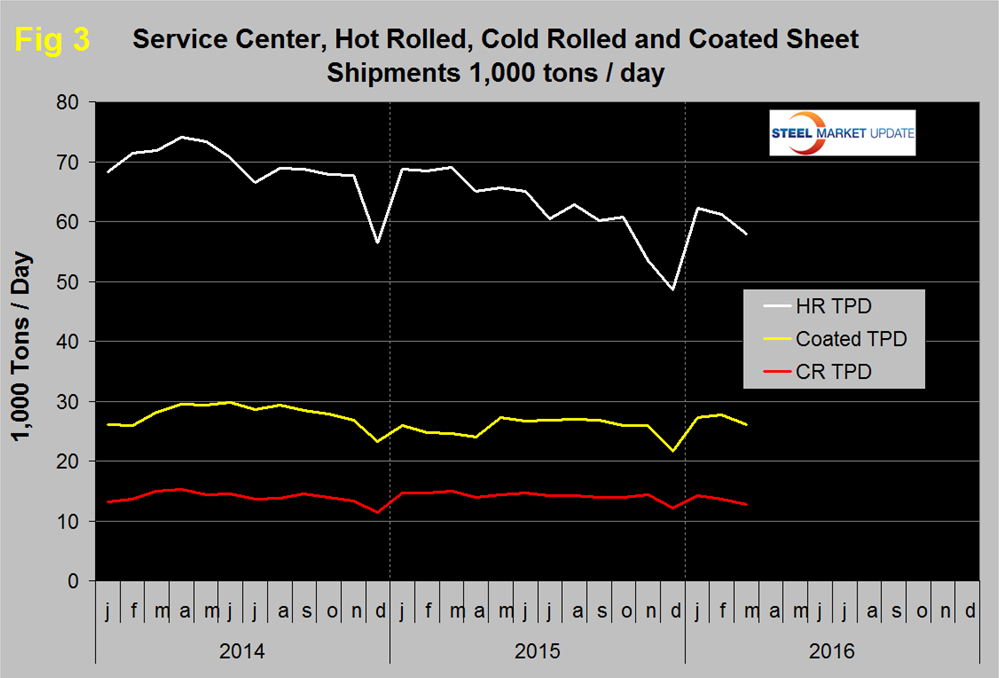
March closed with months on hand (MoH) of 2.29, down from 2.45 at the end of February. All products except coated sheet had a double digit y/y decrease in MoH and plate was down by 39.8%. Figure 4 shows the MoH by product monthly since January 2009. Pipe and tube currently has the highest months on hand. There continues to be a wide difference between the performances of flat rolled (sheet + plate) and long products (structurals + bar) at the service center level.
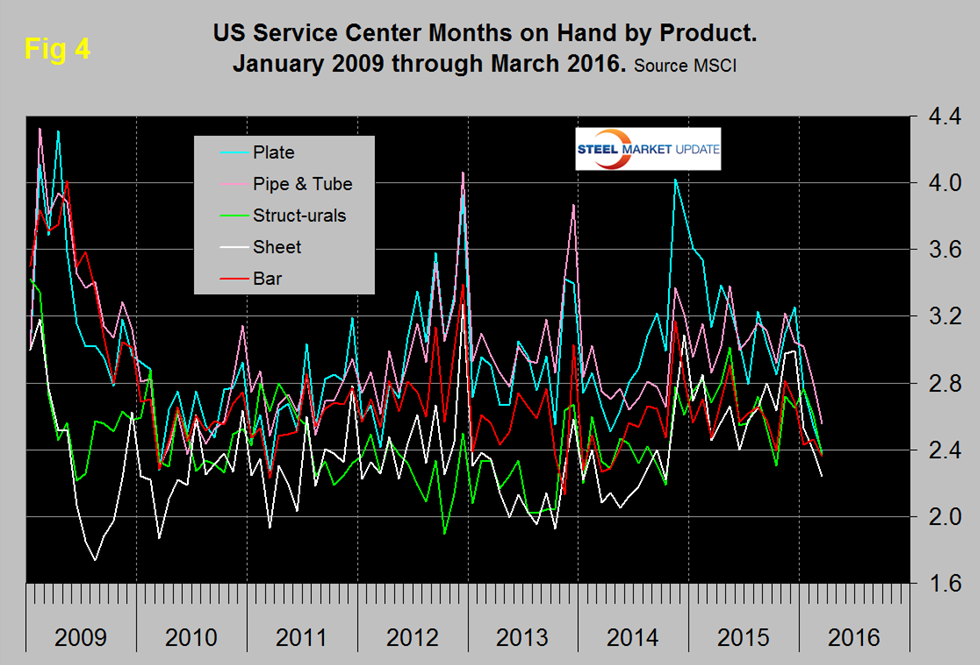
Long product shipments from service centers are now lower than they were at the depths of the recession which as we have reported previously makes no sense to us unless there has been a mass migration of buyers direct to the mills. Alternatively the numbers are just wrong because of gaps in company participation (Figure 5).
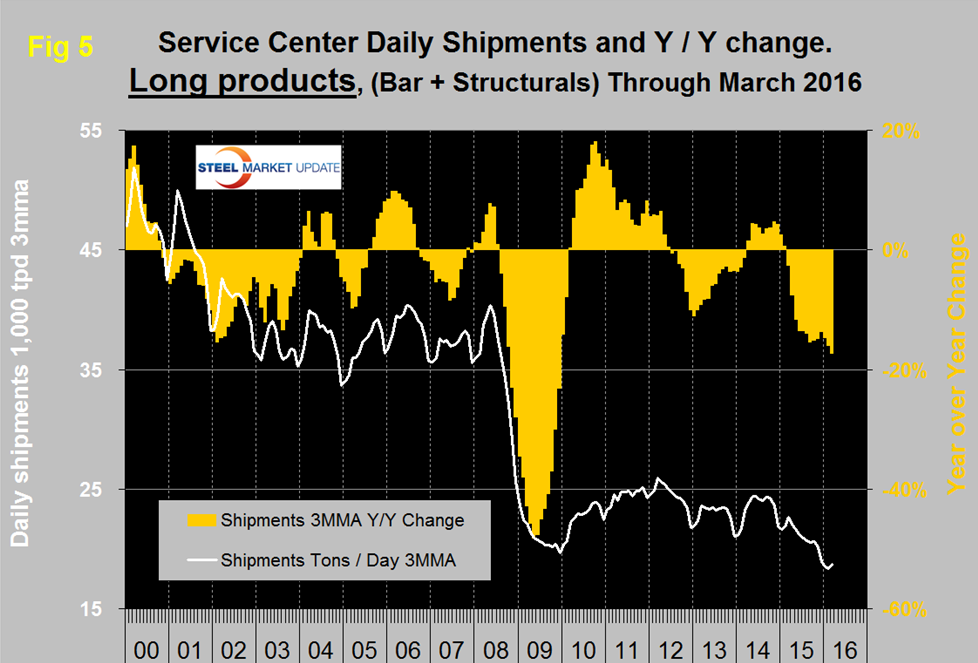
Considering the improving construction statistics, we have no explanation for this dismal and deteriorating long product performance. Flat rolled has had a much better recovery since mid-2009 and had positive y/y growth for 18 straight months through January 2015. In February 2015 growth slowed to zero, in March came in at negative 1.6% and has been negative ever since (Figure 6).
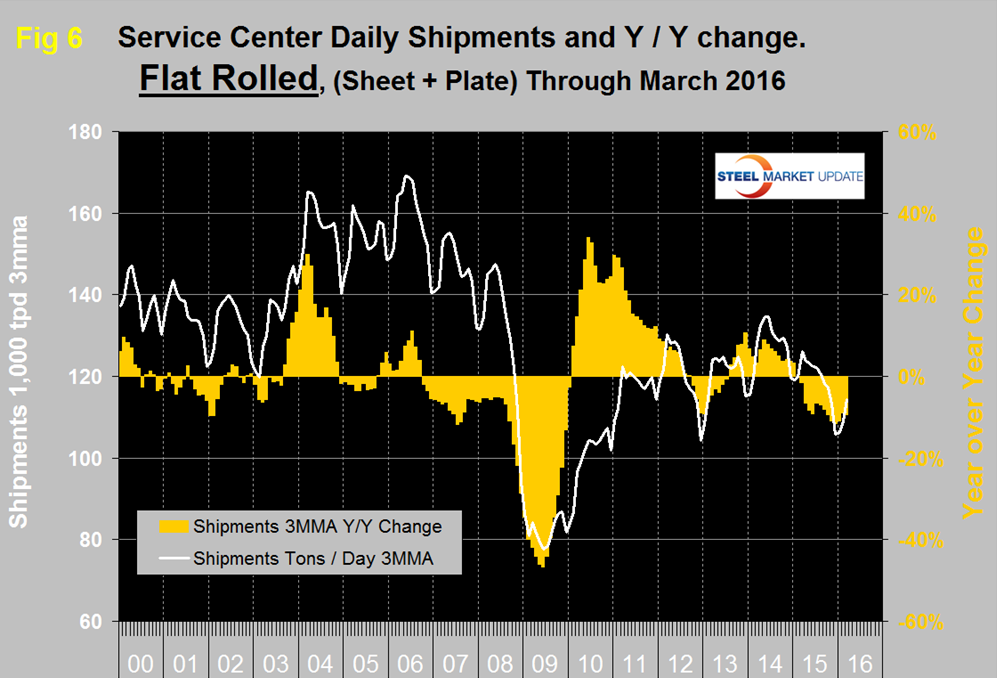
In 2006 and 2007, the mills and service centers were operating at maximum capacity. Figure 7 takes the shipments by product since that time frame and indexes them to the average for 2006 and 2007 in order to measure the extent to which service center shipments of each product have recovered. All products experienced the normal January pick up and as described above bars and structurals have the worst record of recovery. Sheet had a strong upward kick in January with a give back in March. The total of carbon steel products is now at 65.0% of the shipping rate that existed in 2006 and 2007, with structurals and bar at 50.1% and 47.8% respectively. Sheet is at 74.0%, plate at 63.3% and tubulars at 66.4%.
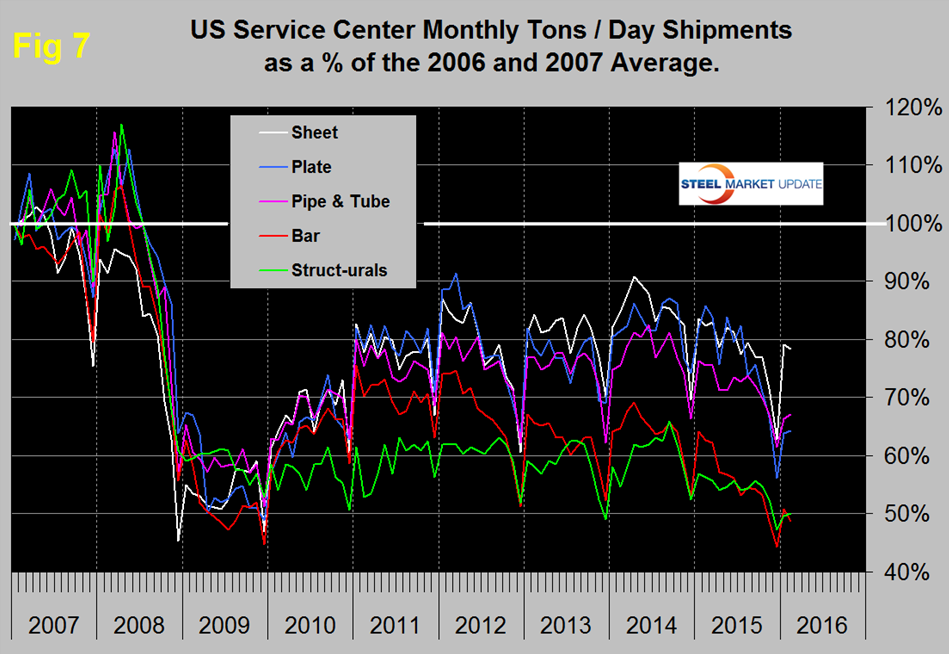
MSCI uses product nomenclature flat and plate. In this analysis at SMU we replace the term flat with sheet. MSCI’s definition of “flat” is all hot rolled, cold rolled and coated sheet products. Since most of our readers are sheet oriented we have removed plate from Figure 6 to highlight the history of sheet products which are shown in Figure 8.
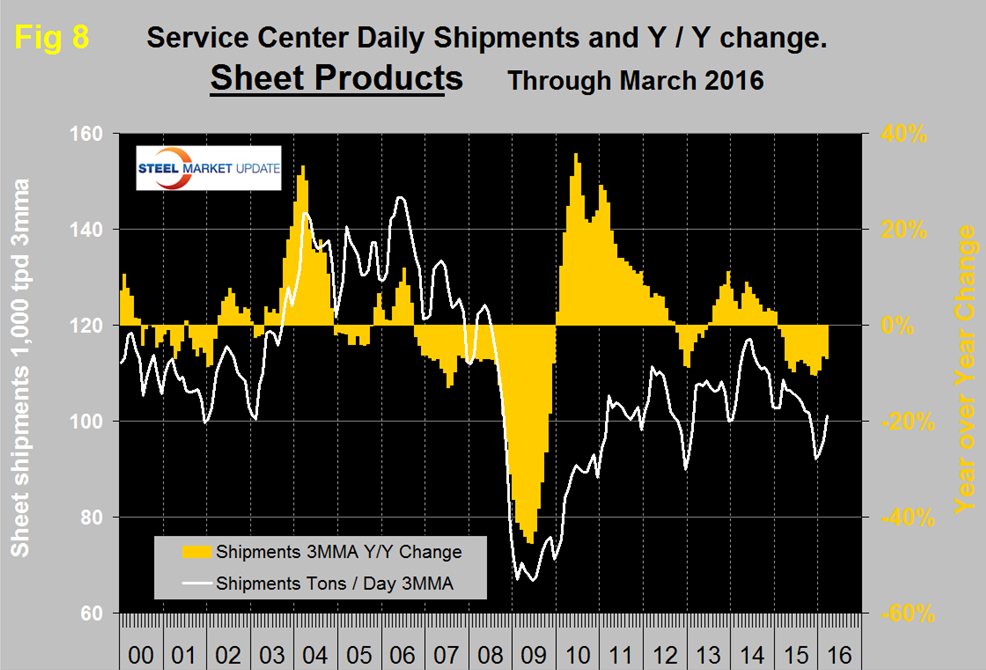
Following the strong post-recession recovery, sheet products experienced 9 months of decline from October 2012 through June 2013. This was followed by 19 months of growth through December 2015 but January 2015 slipped back into negative territory at -0.7% year over year and has been negative ever since with a 6.9% contraction in March 2016.
SMU Comment: In Figures 2, 5, 6 and 8, the white lines show tons per day shipments. There was a distinct decline in shipments for all major product groups (sheet products combined) in 2015 and on a y/y basis there is no light at the end of this tunnel. Figure 9 shows the total supply to the market of long and flat products based on AISI shipment and import data.
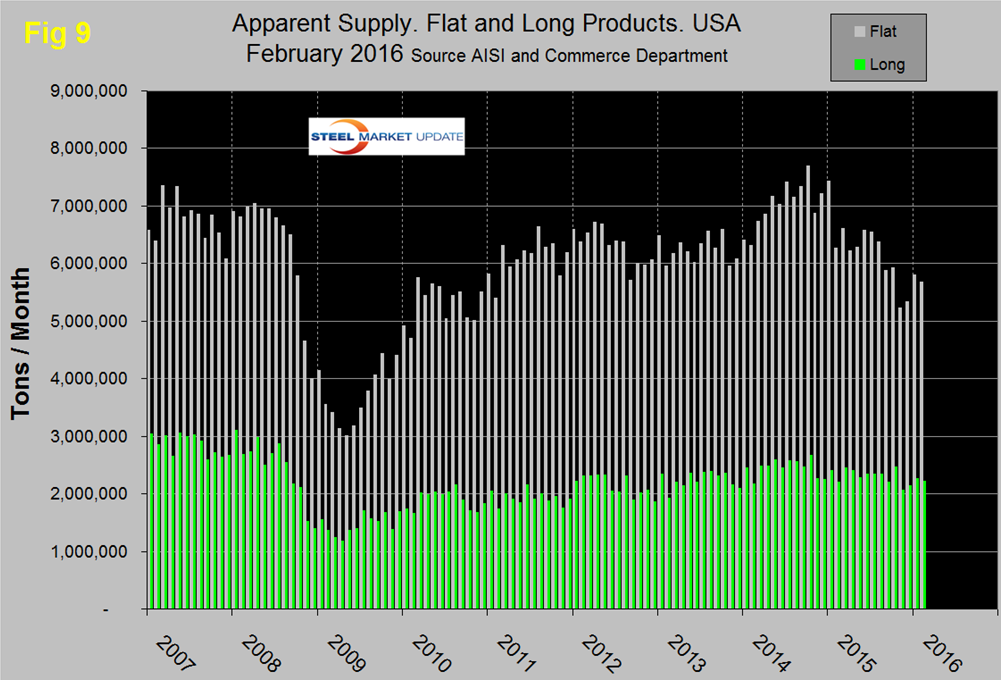
Total supply of long products is much better than the MSCI report of service center shipments with a volume almost double the recessionary low point. Total supply of flat rolled products peaked in October 2014, dropped sharply in March then through August didn’t change much. However in November supply was the lowest since March 2010. There has been an uptick in total flat rolled supply this year but compared to this time last year volumes are depressed. Note: this supply data is one month behind the MSCI information.
The SMU data base contains many more product specific charts than can be shown in this brief review. For each product we have ten year charts for shipments, intake, inventory tonnage and months on hand. Some readers have requested these extra charts for a particular product and others are welcome to do so.







